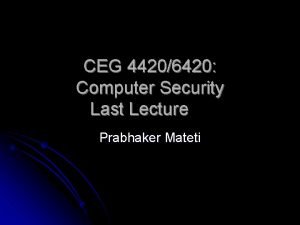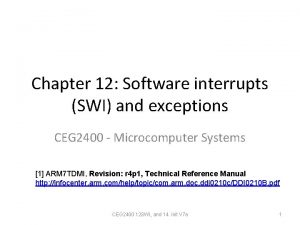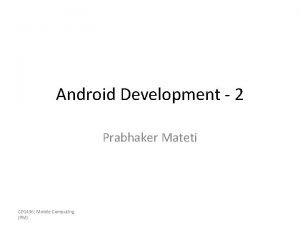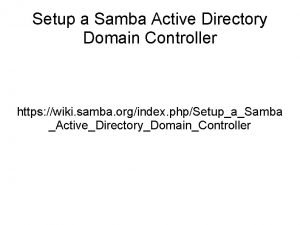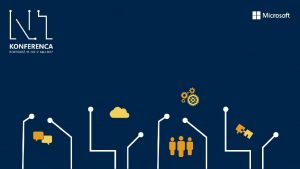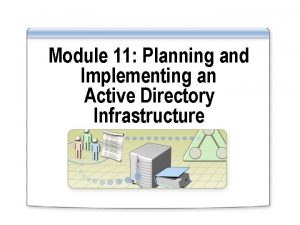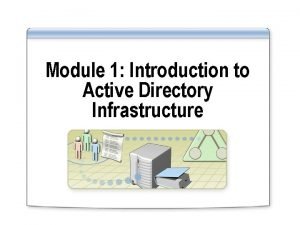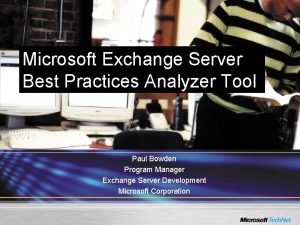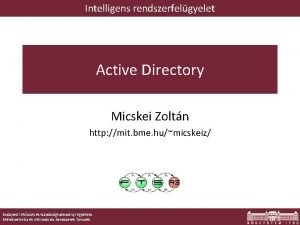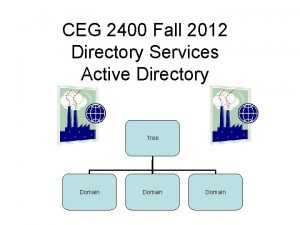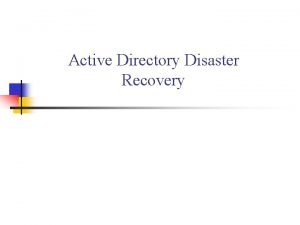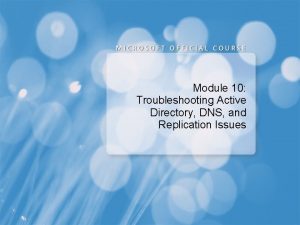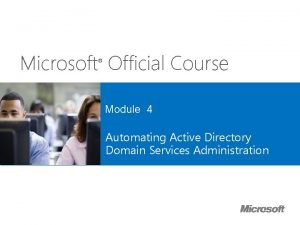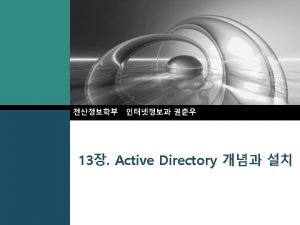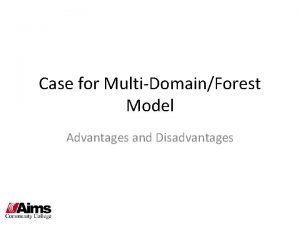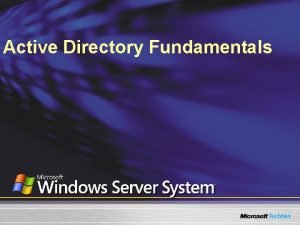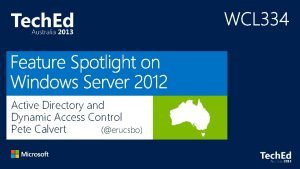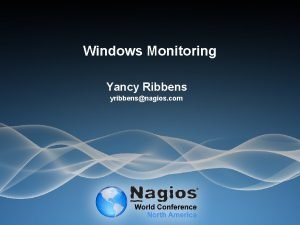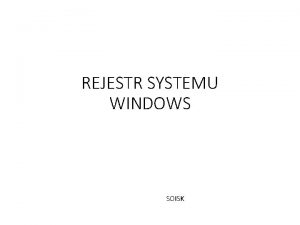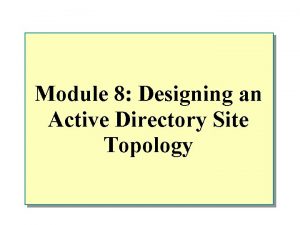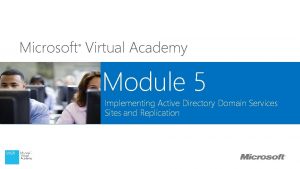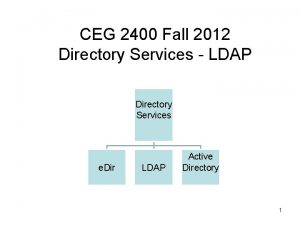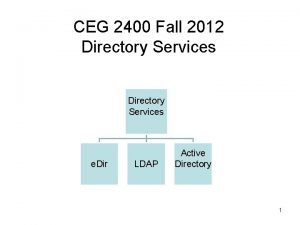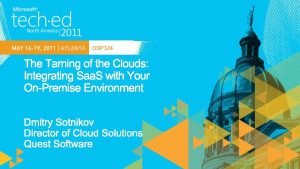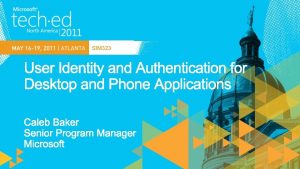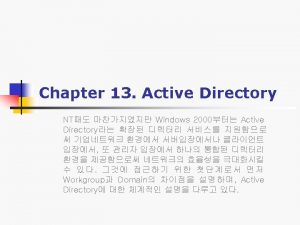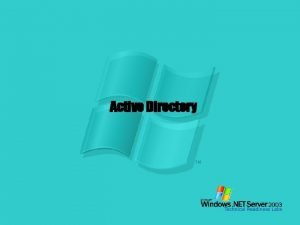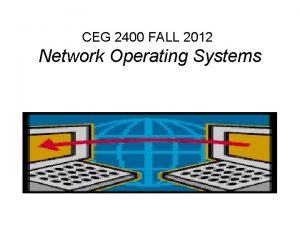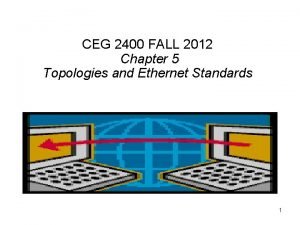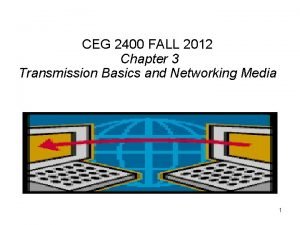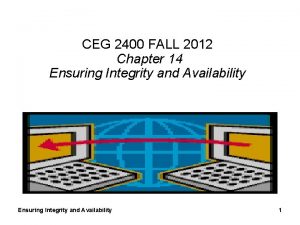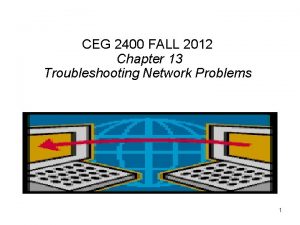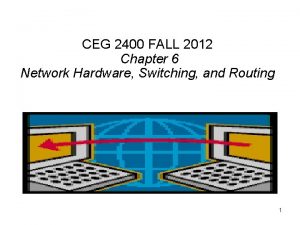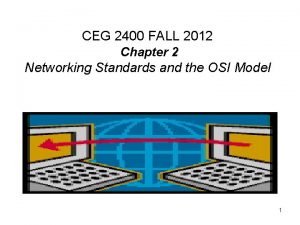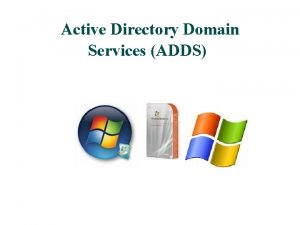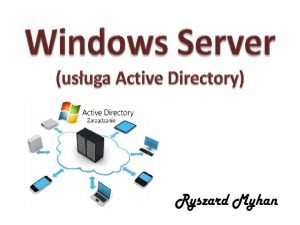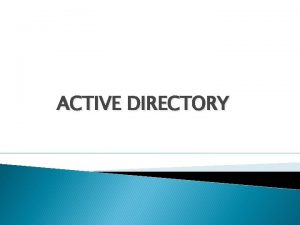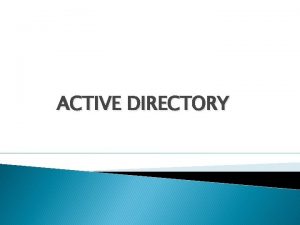CEG 2400 Fall 2012 Directory Services Active Directory
























- Slides: 24

CEG 2400 Fall 2012 Directory Services Active Directory Tree Domain

Directory Services Active Directory • Microsoft Directory service • Initially released in 1999 • Originally designed for Windows 2000 Server – Enhanced with Windows Server 2008 • Windows Server 2008 types – Workgroup model – Domain model 2

Workgroups • Peer-to-peer network • Decentralized management – Each computer has own database • User accounts, security privileges – Significantly more administration effort • Practical for small networks – Few users – Simple to design, implement 3

Directory Services Active Directory – Domain Model • Three main parts – Domain – Tree – Forest 4

Domains • Client/server network with a shared database • Domain - Group of users, servers, and other resources – Share centralized account and security information in a database • Active Directory – Contains domain database with objects and attributes and schema – Makes it easier to organize and manage resources and security 5

Active Directory - Domains • Domain not confined by geographical boundaries • Domain controller servers – Contains directory information about objects in a domain • Member servers – Do not store directory information, can’t be used to authenticate users • Replication – Process of copying directory data to multiple domain controllers 6

Domains Domain model on a Windows Server 2008 network 7

Active Directory • Objects fall into two broad categories: – resources (e. g. , printers) – security principals (user or computer accounts and groups). • Security principals are assigned unique security identifiers (SIDs) • This is where access rights are given • Users must have unique names – flat database

OUs (Organizational Units) • Hold multiple objects having similar characteristics – Can be nested – Can contain other OUs or objects • Provides simpler, more flexible administration – Apply policies to OU – Do not function as containers – Use users or groups for access permissions 9

Domains Multiple domains in one organization 10

Domains

Trees and Forests • Directory structure above domains – Large organizations use multiple domains • Domain tree – Organizes multiple domains hierarchically • Root domain – Active Directory tree base • Child domains – Branch off from root domain 12

Trees and Forests A tree with multiple domains and OUs 13

Trees and Forests • Forest – A collection of one or more domain trees – Trees share common schema • Domains within a forest can communicate • Domains within same tree – Share common Active Directory database 14

Two Tree - Forest

Trust Relationships • Relationship between two domains – One domain allows another domain to authenticate its users • Active Directory supports two trust relationship types – allows users to authenticate – Two-way transitive trusts – Explicit one-way trusts 16

Trust Relationships Two-way trusts between domains in a tree 17

Trust Relationships Explicit one-way trust between domains in different trees 18

Trust Relationships

Naming Conventions • Active Directory naming conventions (namespace) – Collection of object names and associated places in Windows Server 2003, Server 2008 network – Based on LDAP naming conventions – Follows the conventions of the internet namespace • Ex. dc=wright, dc=edu • Ex. cn=server 1, dc=wright, dc=edu • Ex. cn=server 2, ou=cse, dc=wright, dc=edu 20

Naming Conventions • Windows Server 2008 network object – Three different names • DN (distinguished name): DC (domain component) and CN (common name) • RDN (relative distinguished name) • UPN (user principal name) • GUID (globally unique identifier) – Each object has one – 128 -bit number 21

Naming Conventions upn = msmith@trinketmakers. com DN: cn=msmith, ou=legel, dc=trinketmakers, dc=com Distinguished name and relative distinguished name 22

Summary • • • Domains Forests Trees AD Objects Trusts Naming Conventions

End of Active Directory Services Questions e. Dir LDAP Active Directory
 Welcome u
Welcome u Ceg security agency
Ceg security agency Software interrupts
Software interrupts Ceg vs nfc
Ceg vs nfc Pranata adilaya tegese
Pranata adilaya tegese Aztransfer ceg
Aztransfer ceg Samba active directory howto
Samba active directory howto Golden ticket detection
Golden ticket detection How to setup a privileged access workstation
How to setup a privileged access workstation Active directory design document
Active directory design document Active directory infrastructure design
Active directory infrastructure design Microsoft exchange best practices
Microsoft exchange best practices Active directory alapok
Active directory alapok Active directory two way trust
Active directory two way trust Active directory disaster recovery best practices
Active directory disaster recovery best practices Active directory replication troubleshooting
Active directory replication troubleshooting Lab 5: manage active directory accounts (module 4)
Lab 5: manage active directory accounts (module 4) Logo active directory
Logo active directory Advantages and disadvantages of active directory
Advantages and disadvantages of active directory Active directory fundamentals
Active directory fundamentals Active directory dynamic access control
Active directory dynamic access control Nagios active directory monitoring
Nagios active directory monitoring Soisk
Soisk Active directory site topology
Active directory site topology Microsoft virtual academy active directory
Microsoft virtual academy active directory

